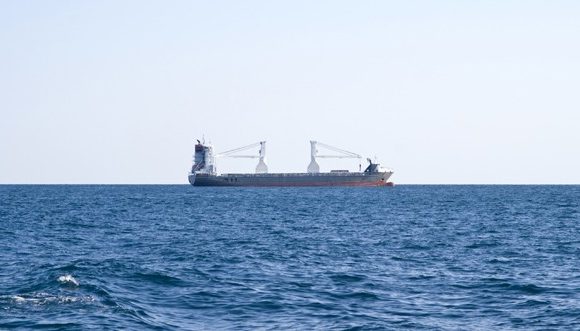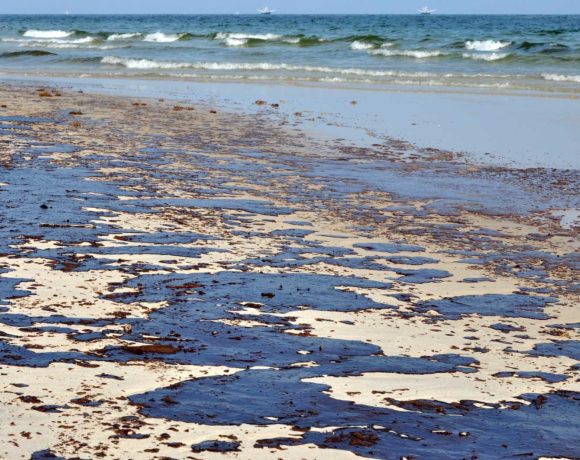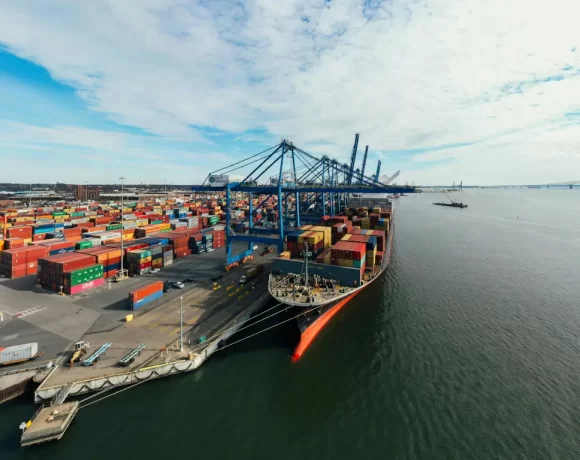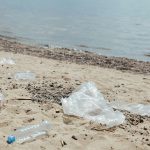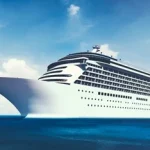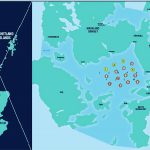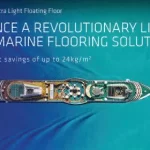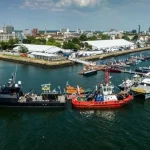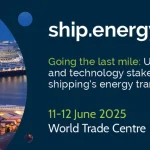Microplastics in the Ocean: The Silent Threat & How We Can Stop It
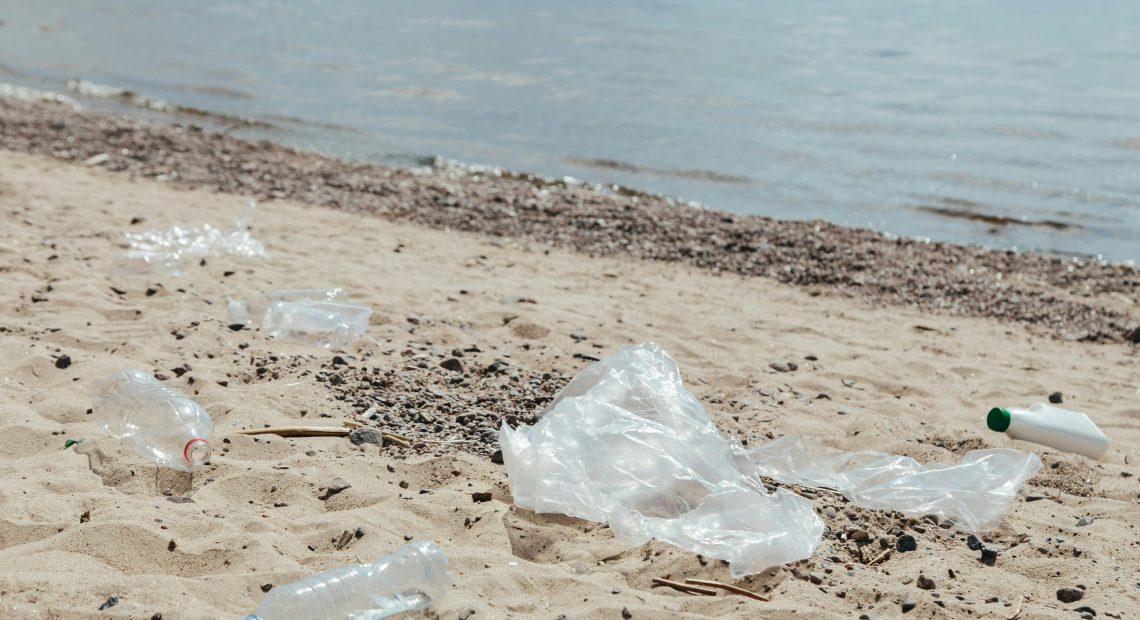
Our oceans hide a growing crisis that’s hard to see. Tiny plastic fragments, smaller than 5mm, have spread across marine ecosystems. This is a huge environmental problem.
These small pieces come from many sources. Big plastic waste breaks down, industrial waste, and even microbeads in our products add to the problem. Studies show over 8 million tonnes of plastic waste go into our oceans every year. A lot of it turns into tiny pieces.
These tiny plastics are a big worry for sea life. Fish and seabirds eat them thinking they’re food, which can block their stomachs and be toxic. Even worse, these plastics are now in our food through seafood.
But, there’s hope. New ways to deal with waste, biodegradable products, and better filters are being developed. Together, we can tackle this issue.
Key Takeaways
- Microplastics measuring under 5mm have become ubiquitous in marine environments worldwide
- Common sources include degrading plastic waste, industrial processes, and consumer products
- These particles persist in the environment for decades, accumulating in marine food chains
- Marine organisms frequently ingest these particles, causing physical and chemical harm
- Humans may be exposed to microplastics through consumption of contaminated seafood
- Technological innovations offer promising solutions to address this environmental challenge
- Collective action across industries and communities is essential for meaningful progress
Understanding Microplastics: What Are They?
Microplastics are a big problem in our oceans. They are tiny pieces of plastic that harm marine life. Knowing what they are and where they come from is key to solving this issue.
Definition and Classification of Microplastics
Microplastics are plastic bits smaller than a grain of rice. They are a big problem because they don’t break down easily. Scientists group them into two types: primary microplastics and secondary microplastics.
Primary microplastics are made small on purpose. Microbeads in face wash are a common example. They go down the drain when we wash our faces.

Secondary microplastics come from bigger plastic items breaking down. This happens through sunlight, waves, and other natural processes.
- Ultraviolet radiation from sunlight
- Mechanical abrasion from waves and sand
- Oxidation and weathering
- Biological degradation from microorganisms
Scientists also sort microplastics by what they’re made of and their shape. This helps us understand their impact better.
Sources of Microplastics in the Ocean
Many things contribute to microplastics in our oceans. Knowing where they come from helps us find ways to stop them.
Clothing made from synthetic materials is a big source. Washing these clothes can release thousands of tiny fibres. These fibres often end up in rivers and oceans.
Factories also play a big role. They release plastic pellets, called nurdles, which can get into waterways. This is a major source of pollution.
“The scale of microplastic pollution is staggering—an estimated 8 million tonnes of plastic enters our oceans annually, much of which eventually breaks down into microplastics.”
Cosmetic products with microbeads have been a big problem. Many countries have banned them, but they’ve already polluted our oceans.
Tyre dust is another source. As tyres wear down, they create microplastic dust. This dust ends up in oceans during rain.
Big plastic items breaking down is also a major source. Things like plastic bottles and fishing gear fragment into microplastics. These can last for decades in the ocean.
Knowing where microplastics come from helps us tackle the problem. It shows that they come from many areas of our lives. This knowledge is the first step to solving the problem.
The Journey of Microplastics: From Land to Sea
Microplastic particles move from land to sea, a major pollution issue today. They start in our homes and communities, then reach the oceans. It’s key to stop plastic contamination before it harms the sea.
How Microplastics Enter Our Oceans
Microplastics enter the sea through many ways, starting with our daily actions. Washing synthetic clothes releases tiny fibres down drains. These tiny pieces often escape wastewater treatment.
Cosmetic products with microbeads are another direct source. Even with bans, old products keep polluting. Tyre wear from roads also adds to the problem, carried by rainwater.

Microplastics can even come from the air. A 2020 study found 136,000 tonnes of them settle on the ocean surface each year. This is due to air currents carrying them.
Coastal activities like fishing and shipping also add to the problem. Plastic items break down into microplastics in the sea. This means more pollution stays in the ocean.
“The most troubling aspect of microplastic pollution is that once these particles enter the marine environment, they’re virtually impossible to remove completely. Prevention at the source is our most effective strategy.”
The Role of Rivers and Drainage Systems
Rivers carry microplastics from land to sea. Studies show UK rivers like the Thames have high levels of microplastics. This is a big concern.
Urban drainage systems speed up this process. Heavy rain brings contaminated water to rivers. This water often bypasses treatment, adding to pollution.
Our cities’ design helps microplastics reach rivers. Impermeable surfaces stop natural filtration. This means more microplastics in urban rivers than rural ones.
Seasons affect how microplastics move. Winter floods can push plastic debris into the sea. This creates big pollution events.
Green spaces can catch microplastics. But, when full, they also add to pollution. It’s a catch-22.
- Direct discharge from coastal activities and wastewater
- Atmospheric deposition via wind currents
- River transport from inland sources
- Urban runoff during rainfall events
- Breakdown of larger plastic items already in marine environments
Plastic pollution in land and sea is linked. Stopping plastic contamination early helps. By tackling it before it reaches rivers, we can reduce ocean pollution.
The Environmental Impact of Microplastics
Microplastics in our oceans are a big problem. They harm marine life and upset the balance of our ecosystems. These tiny pieces of plastic are everywhere, causing big issues that scientists are trying to understand.
Microplastics in our seas harm marine life and the environment. They affect everything from tiny plankton to big fish. This damage spreads through the food chain, harming many marine ecosystems.
Threats to Marine Life
Marine animals face many dangers from microplastic pollution. These tiny plastics can harm sea creatures in many ways. The biggest risk is when they get eaten by animals.

- Intestinal blockages that stop digestion and nutrient absorption
- False satiation where animals feel full but get no nutrition
- Internal injuries like intestinal holes and organ damage
- Reduced growth rates and problems in young animals
- Decreased reproductive success which can harm populations
About 1 million seabirds die each year from plastic pollution. Many of these birds have plastic in their stomachs. In British waters, fish like cod and haddock also eat microplastics.
Studies in the North Sea found microplastics in over 30% of fish. This harms these species and the fishing industry. It’s a big problem for both marine life and fishing jobs.
“The presence of microplastics in fish is a threat to marine life and the fishing industry that depends on it.”
Disruption of Ecosystems
Microplastics also harm marine ecosystems in many ways. They affect the balance and health of these environments.
One big problem is how microplastics change the food chain. They start with plankton and go up the food chain, getting more toxic. This affects the whole ecosystem.
- Microplastics reduce biodiversity by harming vulnerable species
- They change how predators and prey interact
- They disrupt how nutrients cycle in the sea
- They can carry invasive species across oceans
- They can spread harmful bacteria and toxins
Microplastics can also carry pollutants like POPs and heavy metals. When animals eat these plastics, they get these toxins too.
Microplastics also harm habitats. They settle on the ocean floor and change the environment. In coral reefs, they make corals more sick and slow their growth.
The health of marine ecosystems depends on many species working together. Microplastics disrupt these relationships, threatening the stability of our oceans. This pollution is a major problem for our seas today.
Microplastics and Human Health Risks
Microplastics are a silent threat to our health, contaminating our food. They spread through our oceans, causing health risks beyond marine life. The maritime industry must understand these risks as awareness and rules get stricter. The evidence is worrying.
Food Chain Contamination
Microplastics enter our food chain through bioaccumulation. They start with plankton and small marine life at the bottom. Then, they move up the food chain as larger species eat them.
Studies in UK waters found high levels of plastic contamination in seafood. A study in Environmental Pollution found microplastics in 100% of wild mussels. Fish like cod and mackerel also have microplastics in their bodies.
Microplastics are found in sea salt, bottled water, and even beer. A 2018 study by the University of Manchester found them in UK tap water. This widespread contamination is a big challenge for food safety.
The average seafood consumer ingests approximately 11,000 microplastic particles annually, with unknown cumulative effects on long-term health.
These findings are a big deal for the maritime industry. Fishing and seafood companies may face new rules and quality checks. The demand for “plastic-free” seafood could change the market.
Potential Health Implications
How microplastics affect our health is not fully understood. They can damage tissues and trigger inflammation. Their small size lets them reach organs beyond the stomach.
The chemical threat is also worrying. Microplastics can carry harmful substances. These include additives, monomers, and environmental pollutants.
- Leaching of additives originally incorporated into plastics during manufacturing (such as phthalates and bisphenol A)
- Release of monomers and polymers as plastics break down
- Transfer of environmental pollutants that adhere to plastic surfaces (including PCBs and heavy metals)
Research suggests these chemicals can disrupt our hormones. This could affect our reproduction, metabolism, and growth. Lab studies show microplastics can enter cells and build up in tissues, but human studies are limited.
The maritime industry must keep up with science and prepare for new rules. Companies working on ocean conservation may get ahead as people care more about the environment and health.
We can’t yet say for sure how microplastics affect us. But we should act to reduce exposure. Maritime stakeholders should support efforts to cut plastic waste and improve waste management.
Case Studies: Regions Affected by Microplastics
Microplastics are not evenly spread across the world’s oceans. This creates pollution hotspots that are alarming. These areas give us insights into how pollution works under different conditions.
By looking at places with lots of plastic debris, scientists can learn more. They can then work on ways to reduce pollution.
The Great Pacific Garbage Patch
The Great Pacific Garbage Patch is a well-known problem. It’s huge, covering about 1.6 million square kilometres between Hawaii and California. It’s not a solid island of trash but a mix of microplastics in the ocean and bigger pieces.
Ocean currents help create this massive problem. The North Pacific Subtropical Gyre pulls in plastic waste. It then breaks down into smaller pieces over time.
A 2018 study found interesting facts about the GPGP. It said microplastics make up about 94% of the plastic in the patch. But, they only make up 8% of the total weight.
This pollution harms marine life. Many species eat plastic, which can be deadly. Over 700 species have been found to interact with debris in the GPGP.
The Great Pacific Garbage Patch shows our global plastic problem. Most of its plastic has turned into microplastics. These are hard to clean up.
Microplastics in European Waters
In European waters, the problem is different but just as serious. The North Sea, English Channel, and Celtic Sea are all polluted. This affects British maritime activities.
Studies have found high levels of microplastics in these areas. The North Sea, with its busy shipping and crowded coasts, is the worst. A 2020 survey found 3.5 microplastic particles per cubic metre of water in the southern North Sea.
Microplastics in European waters are different from those in the GPGP. Textile fibres are common in European waters, showing the need for better wastewater treatment. But, the Pacific has more fragments from bigger plastic items.
Microplastic levels in the English Channel are getting worse. They’ve gone up by about 2.4% every year for the last decade. This is bad news for the area’s fish and fishing industry.
For UK shipping, this pollution is a big problem. It can damage ships and increase maintenance costs.
Trying to clean up European waters is hard. It needs international cooperation, with the UK leading efforts like the OSPAR Commission’s marine litter programme.
These examples show that microplastics in the ocean are a global issue. But, they affect different places in different ways. Knowing these differences is key to solving the problem.
Current Research on Microplastics
Scientific research is changing how we see microplastics. It’s finding new ways to detect and remove these tiny particles from our oceans. This effort shows how urgent it is to stop plastic pollution before it harms our seas.
Groups like research institutions, tech companies, and maritime groups are working together. They mix science with practical skills to find solutions. These solutions are both effective and can be used in real life.
Innovations in Detection and Analysis
First, we need to measure the problem accurately. New technologies can now find, count, and study microplastics with great detail. This is key because we can’t fix what we can’t measure.
Spectroscopic techniques have changed how we find microplastics. They can spot specific plastics in complex samples. Tools like FTIR and Raman spectroscopy can find particles as small as 1 micrometer, smaller than many microfibers from clothes.
Automated systems are another big step forward. They can check lots of water samples quickly, giving us real-time data on microplastic levels. This helps us map pollution better and more often.
Using satellites and drones, we can now scan huge areas of the ocean. This helps us find where pollution is worst and track it. It guides us to where we need to clean up the most.
There’s also big progress in finding microfibers, a big part of ocean pollution. New methods can highlight synthetic fibers in samples. AI can then tell the difference between natural and synthetic fibers very well.
- Hyperspectral imaging that can identify microplastics on beaches from aerial surveys
- Portable detection devices for field researchers and citizen scientists
- Environmental DNA techniques that detect microplastic impacts on marine organisms
- Machine learning algorithms that predict microplastic accumulation patterns
Breakthroughs in Remediation Techniques
Removing microplastics is a bigger challenge than finding them. But scientists are finding ways to clean up our oceans. These new methods are very promising for cleaning up on a big scale.
New filters are a practical way to remove microplastics. These filters can catch particles as small as 1 micrometer. They work well in places where plastic waste gets into the sea, like wastewater plants and river outlets.
“The most effective solutions will combine prevention, interception, and remediation strategies. We need to address microplastics at every stage of their journey from production to ocean.”
Biodegradation uses nature to break down plastics. Scientists have found microbes that can break down plastics quickly. These microbes can turn plastics into harmless organic matter in weeks, not centuries.
Chemical methods are also getting better at breaking down plastics. These methods can turn plastics back into their original parts, allowing for true recycling. They’re great for cleaning up plastics in hard-to-reach places.
Biodegradable Future is leading the way with their special additive. This additive makes plastics break down faster without losing their strength. It shows how we can change how we make and throw away plastics.
- Magnetic extraction systems that attract microplastics treated with magnetic coatings
- Acoustic separation techniques that use sound waves to isolate microplastics
- Bioremediation using engineered microorganisms deployed in controlled environments
- Coagulation methods that cause microplastics to clump for easier removal
These research efforts give us hope for solving the microplastics problem. The challenge is big, but the innovation is growing. Scientists are working hard to find better, greener ways to fight microplastic pollution.
Government Regulations and Policies
Dealing with microplastics needs strong laws that protect the environment and work well in practice. Scientists are studying the effects of microplastics, while governments worldwide are making rules to stop plastic pollution. These rules range from banning certain products to improving waste management and international agreements.
UK’s Strategy for Addressing Microplastics
The United Kingdom is leading the fight against microplastic pollution. It uses a mix of laws, economic help, and teamwork to cut down plastic waste in oceans.
The UK’s main move is the microbeads ban from 2018. It stops the sale of personal care products with plastic microbeads. This law targets a big source of microplastics that used to go into waterways through drains.
The UK’s plastic bag charge has also been a big success. It has cut single-use bag use by over 95%. This shows how charging for something can change how people and shops behave.
- The UK Marine Strategy aims to make British waters healthy by 2020
- Extended Producer Responsibility schemes make manufacturers responsible for plastic products’ whole life
- The Resources and Waste Strategy plans to stop avoidable plastic waste by 2042
- Stricter waste rules for ships in British waters are being set
Despite these good steps, there are challenges in making these rules work. Some say the rules aren’t enforced well enough and need to be stronger. People working at sea should expect even stricter rules as the UK fights plastic pollution harder.
International Cooperation and Initiatives
Because ocean pollution is a global problem, countries need to work together. There are many global efforts to tackle microplastics through agreements and industry rules.
The United Nations has started several projects, like the Clean Seas campaign and the Global Partnership on Marine Litter. These help share knowledge and work together across borders, which is key for protecting oceans.
“Bans and taxes on single-use plastics exist in more than 120 countries, but these measures alone are not enough when globally, only 9% of plastic waste is recycled while 22% is mismanaged.”
Important global rules for sea operations include:
- MARPOL Annex V – stops vessels from dumping plastics and regulates other waste at sea
- The London Convention – stops marine pollution by banning waste dumping
- The Basel Convention – controls moving hazardous waste across borders, now includes plastic
- Regional Sea Conventions – help countries work together in specific sea areas
These rules make it hard for ships to follow the law in different places. But, there are efforts to make rules clearer and better for everyone.
But, making global rules work is tough. It’s hard to enforce rules in the open sea, and countries with less resources struggle to follow them. Also, plastic production is growing fast, and rules can’t keep up, making new, quick policies needed.
For those working at sea, keeping up with changing rules is key. Industry groups and regulators often publish guides to help ships follow the law. By adapting to these rules, the sea industry can help protect oceans and stay in business.
What Can Individuals Do to Help?
Fighting microplastics starts with simple choices we make every day. While big changes come from governments and companies, our small actions add up. By changing how we buy and join in on conservation, we can help our oceans.
Reducing Plastic Usage
Did you know washing clothes can pollute our oceans? Synthetic fabrics release tiny fibres that harm marine life. Here’s how you can cut down on plastic:
- Install microfibre filters on your washing machine to catch synthetic fibres
- Choose natural fabrics like cotton, wool, and linen over synthetic ones
- Avoid products with microbeads by checking for polyethylene and polypropylene
- Use reusable containers instead of plastic ones
- Opt for plastic-free alternatives like bamboo toothbrushes and beeswax wraps
Maritime workers can also make a difference. By choosing sustainable options, you can reduce plastic waste. Look for plastic-free packaging and set up recycling plans.
“The most effective way to reduce plastic pollution is to prevent it from entering the environment in the first place. Every piece of plastic we don’t use is one less piece that could end up in our oceans.”
Participating in Cleanup Efforts
Joining cleanups is another way to help. The maritime industry can lead by showing environmental responsibility:
- Sponsor beach and shoreline cleanups in coastal areas
- Establish employee volunteering programmes for marine conservation
- Adopt advanced filtration technologies to stop microplastic discharge
- Partner with environmental organisations for bigger cleanups
- Document and share your impact to inspire others
Some companies, like Maersk, are already making a difference. They have zero-waste policies and support cleanups. These efforts not only clean our oceans but also improve their reputation.
For individuals, joining beach cleanups is a great way to help. The Marine Conservation Society’s Great British Beach Clean is a good example. Volunteers collect and document plastic, helping researchers find solutions.
Every small action counts. Picking up litter or disposing of fishing gear properly helps. By reducing our use of plastic and participating in cleanups, we can tackle the microplastic problem together.
Future Innovations: Tackling the Microplastics Crisis
We face a growing crisis of microplastics pollution. New technologies offer hope to reduce their environmental impact. Scientists and industry leaders are working on solutions that could change how we use plastics and protect our oceans.
These new ideas are not just ideas. They are real steps to tackle a big ecological challenge. By changing how we make, use, and throw away plastics, we can fight the pollution harming marine life worldwide.
Emerging Technologies in Plastic Alternatives
The search for plastic alternatives has sped up. New technologies are coming from labs around the world. Bio-based polymers from algae, fungi, and waste are showing great promise as plastic substitutes.
These new materials work like traditional plastics but are better for the environment. For example, packaging made from mushrooms is strong but breaks down naturally without harming the environment.
- Fishing gear made from biodegradable polymers that are strong but break down safely
- Marine paints and coatings without microplastics to reduce pollution from boats
- Shipping materials that last in the sea without breaking into microplastics
- Textiles that shed fewer microfibres, protecting marine life
New recycling methods are also being developed. These go beyond just breaking down plastics. They can rebuild plastics into new, clean materials, creating a closed-loop system.
Biodegradable Options and Their Viability
Biodegradable plastics are a key area of research. They break down completely into harmless parts, unlike regular plastics that just get smaller.
Recently, scientists have found a way to make plastics break down naturally. This doesn’t affect their strength or how long they last. But, when they do break down, they do so without leaving harmful microbeads or other small plastics.
But, not all “biodegradable” plastics are the same. We need to know how and when they break down. Many plastics only decompose in special facilities, not in the sea.
“The term ‘biodegradable’ alone is insufficient—we must specify the conditions under which degradation occurs and the timeframe required. Many so-called biodegradable plastics only break down in industrial composting facilities, not in marine environments.”
For the sea, we need plastics that break down in saltwater. They must work well in cold, salty conditions where they break down slowly. New standards for biodegradable plastics in the sea are being set.
The success of these alternatives depends on several things:
- How much they cost compared to regular plastics
- If they can be made on a large scale
- If they work well in tough situations
- If they fit with current manufacturing methods
- If they meet legal requirements for use
While there are challenges, progress is being made. Every year, biodegradable plastics get better and cheaper. What was once a dream—plastics that don’t harm the environment—is now closer to reality.
We all need to work together to make this change. By supporting and using these new plastics, we can cut down on microbeads and other small plastics in our oceans. This way, we can keep plastics useful in our lives without harming the environment.
We need to invest wisely, make good policies, and teach people about these new plastics. With these efforts, we can create a future where plastics don’t threaten our oceans and the environment.
The Path Forward: Creating Awareness and Solutions
Fixing the microplastic problem needs a mix of education, community efforts, and changes in industry. We can make oceans cleaner by using filters, picking natural stuff, and avoiding single-use plastics. These steps are key to a cleaner future.
Educational Campaigns and Community Involvement
Starting with awareness is key to saving our oceans. Schools in the UK now teach about marine plastics. Community clean-ups on beaches take out tons of trash every year. Online campaigns also help, turning small actions into big changes.
The Marine Conservation Society’s projects let people help by collecting data on plastic. This helps us understand the problem better and connect with our local waters.
Supporting Sustainable Practices in Industry
The shipping world is moving towards using less plastic. Big names like Unilever and Marks & Spencer aim for 100% recyclable packaging by 2025. New companies are making plastic-free shipping materials too.
Programmes now give awards to companies that cut down on plastic but stay efficient. This push for change is making a difference, thanks to science, teamwork, and personal actions. Together, we’re making a big impact on our oceans.

